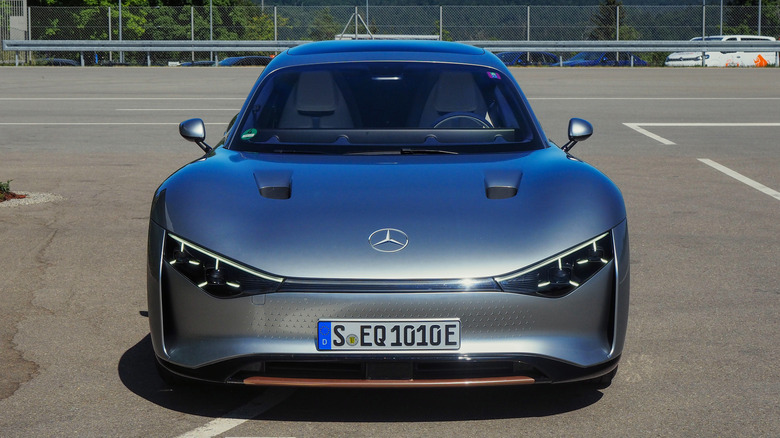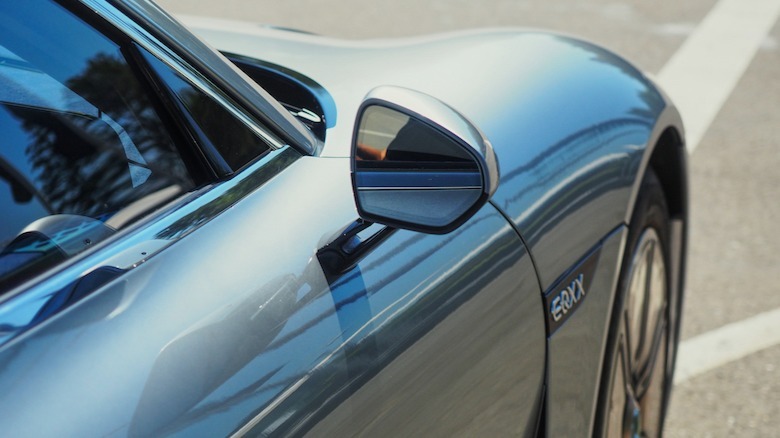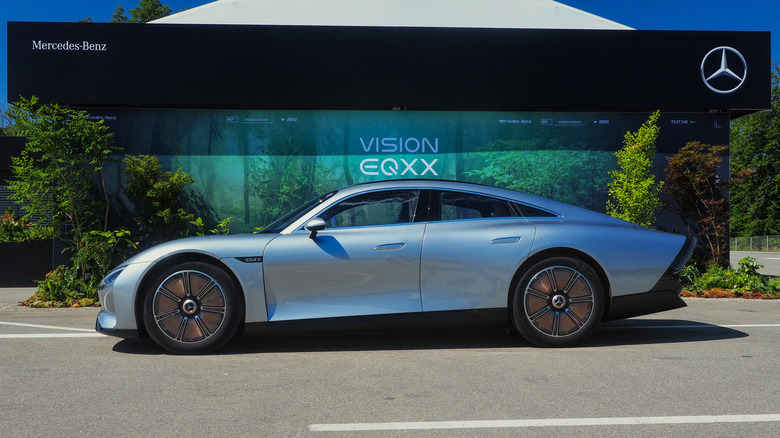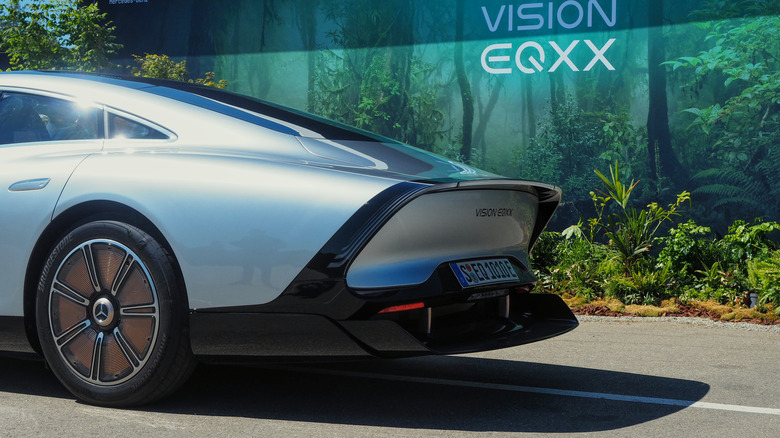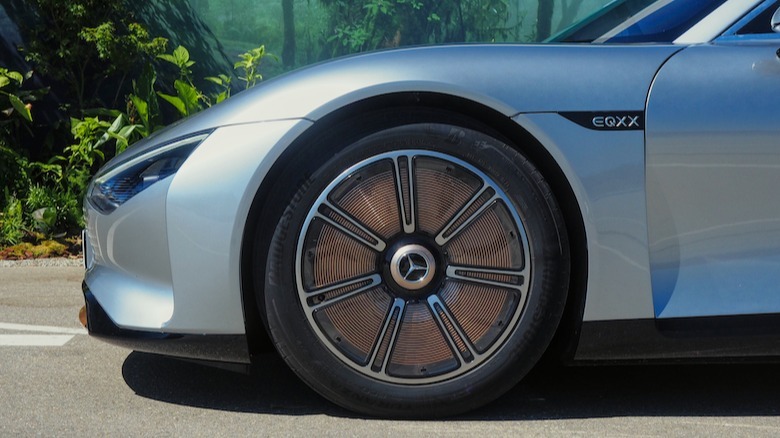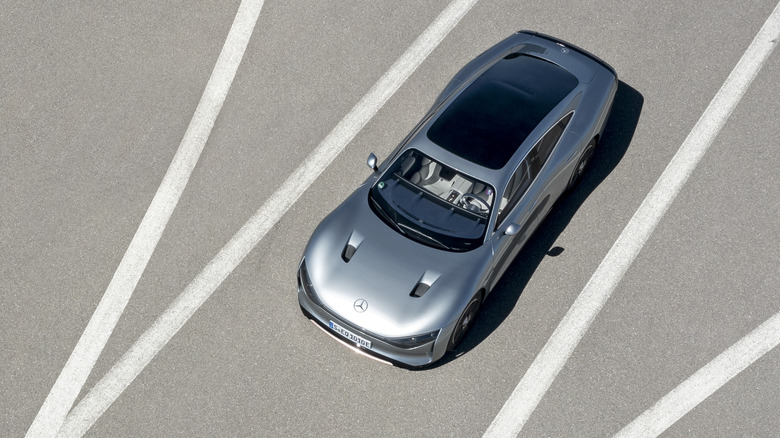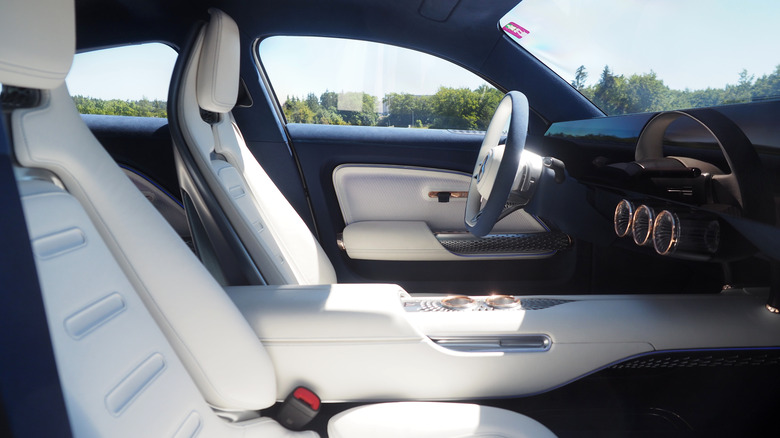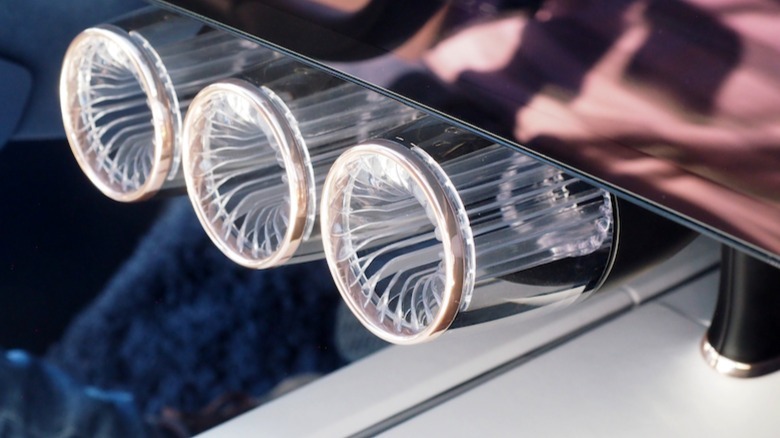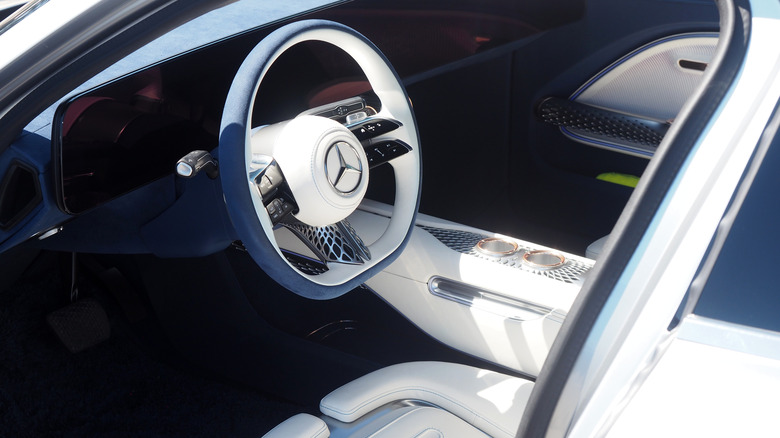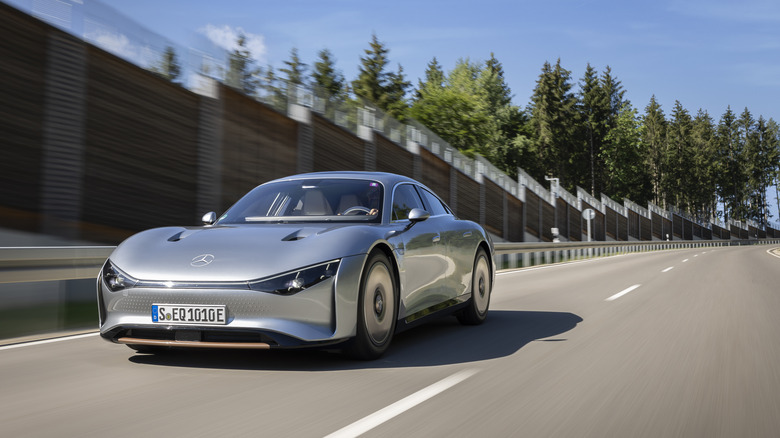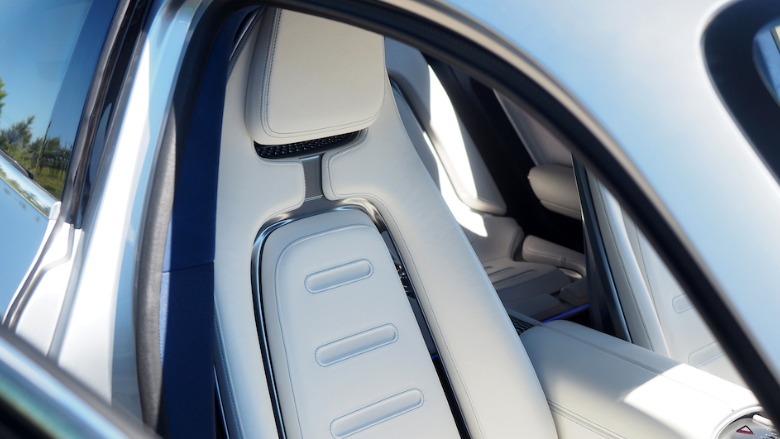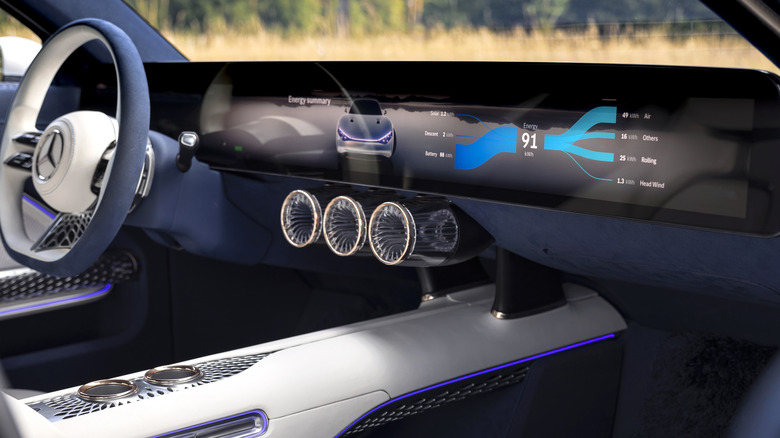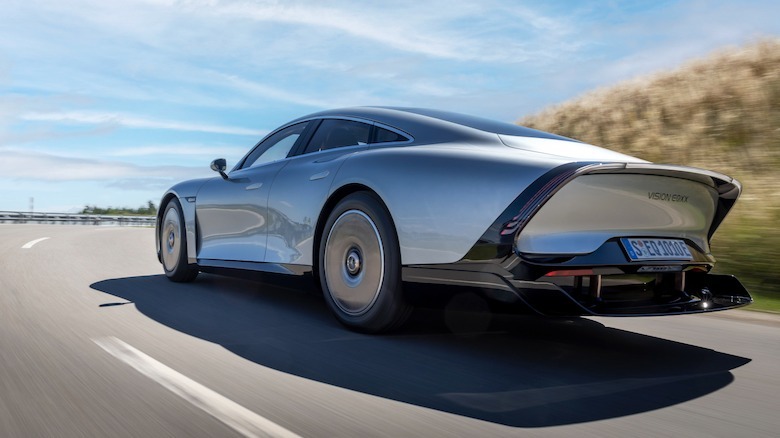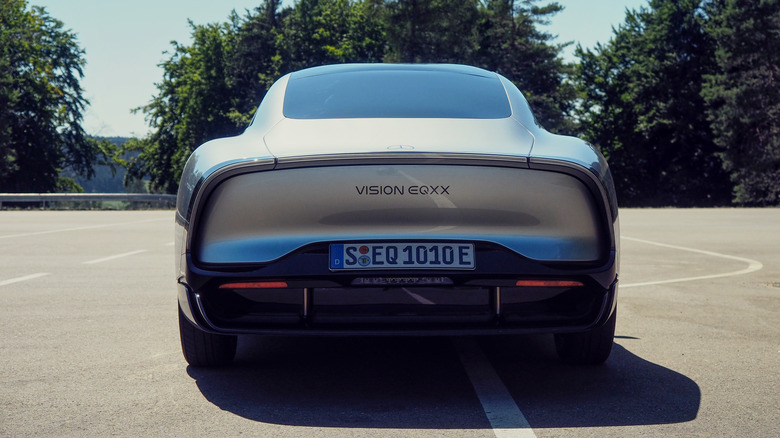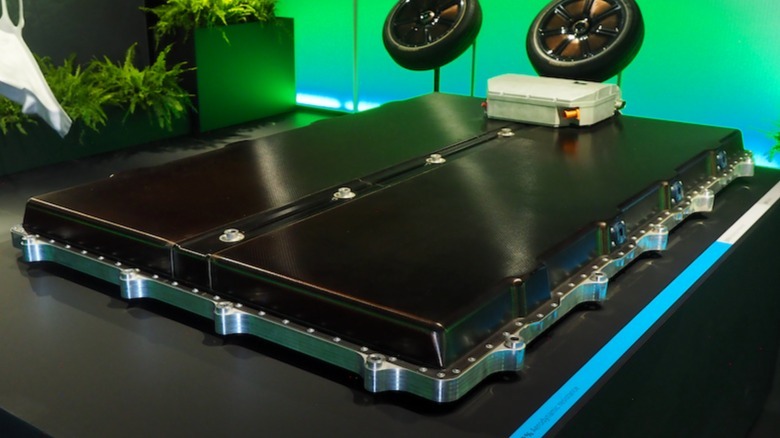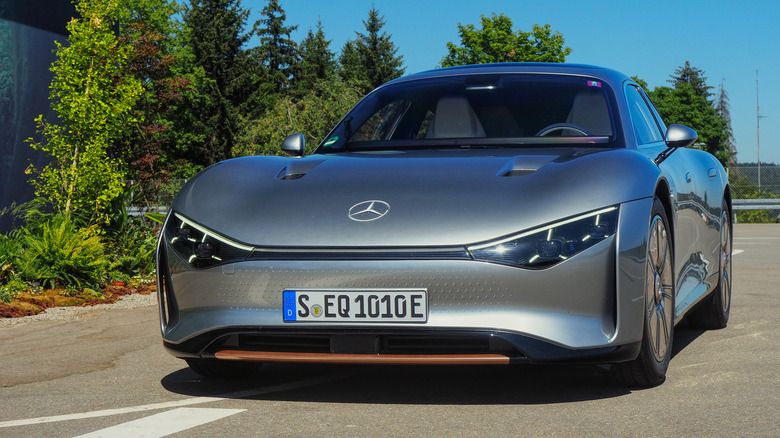Driving The Outrageous Mercedes-Benz VISION EQXX Defies Expectations
Despite the big range claims, despite the crazy styling, after driving the Mercedes-Benz VISION EQXX concept I can tell you that going a long way on a single charge isn't, in fact, what this wild one-off electric car is all about. I expected a hyper-focused, borderline-spartan assembly of pared-back parts that would bootstrap their way to the finish line. Instead, I found arguably the most compelling Mercedes I've driven in a decade.
Arriving two years after a self-imposed challenge to build an EV capable of driving a thousand kilometers — or about 621 miles — the VISION EQXX is not, sadly, headed to production. That means we won't get to see how bizarrely it sits alongside the automaker's more familiar models in dealerships: a sci-fi oddity landed amid earthbound fare.
It looks like no other Mercedes-Benz, with its compact fascia, swooping roofline, and narrower rear track. There's something slightly retro about it, though ironically it's still more sedan-like than the EQS. Pop-out door handles and expansive light bars at the front and rear are a nod to production models, too.
A spaceship among earthbound vehicles
The VISION EQXX even has side mirrors, even though Mercedes could've replaced them with cameras and made the whole assembly far smaller. Though already legal in Europe, according to the engineers involved the aero efficiencies gained wouldn't offset the power and weight that came from wiring them up to internal displays that got bright enough to be visible in all conditions.
Instead, they reshaped the mirror housings themselves so as to make them more slippery through the air. The whole thing moves around to adjust the viewing angle, too, meaning the mirror can be flush with the overall assembly. Grooves and gaps mean turbulence, after all.
It's a good example of how a knee-jerk assumption — for example, that trimming exterior components would automatically be a positive thing — doesn't necessarily work out in practice. Especially when you have a particular challenge in mind that demands each and every aspect of the car contribute.
Obsession in practice
The big number, the one Mercedes engineers and efficiency enthusiasts all obsess over, is kilowatt hours per 100 kilometers. It's a way of expressing just how economical — or not — an electric car can be. It's also where the VISION EQXX is designed to truly shine.
Having demonstrated earlier in 2022 that it could hit the original 1,000-kilometer goal with juice to spare, the Mercedes team took it out again for a cross-European jaunt where the VISION EQXX exceeded 1,200 kilometers, or a whopping 747 miles. The headline numbers, those Mercedes is particularly proud of, are 8.3 kilowatt hours per kilometer, and 95% energy efficiency.
A good production electric car can reach 90% energy efficiency. Internal combustion cars clock in at 30-40%, and that's if they're lucky; burning fossil fuels isn't exactly a frugal process. To take it to 95%, Mercedes had to effectively double the efficiency by which the VISION EQXX turns battery power into performance on the road, compared to production EVs like its own EQS sedan.
Oddly long, oddly light
An economical drivetrain alone isn't enough to achieve that. The VISION EQXX's 180 kW rear-wheel-drive architecture is efficient, yes, but the big problem is aerodynamics. A huge chunk of your energy is spent just moving air in front of the EV.
The result is a four-door sedan that's about 16 feet long, low to the ground with an exceedingly slippery profile, and a deployable rear diffuser to even better control airflow. It's oddly light for an EV, too, at under 3,900 pounds; contrast that with an EQS 580, which tips the scales at not far from 6,000 pounds.
Mercedes' designers refused to cover up the wheels — for obvious aesthetic reasons — and so the unique rose-gold magnesium rims have built-in transparent covers instead. Vents integrated into the front fenders generate air curtains, meanwhile, guiding airflow around them. The result is a drag coefficient of 0.17, making the VISION EQXX more aerodynamic than any production vehicle. An EQS, so smoothly contoured it arguably looks more like a pebble with car details painted on, only hits 0.20.
Small tweaks add up to big range boosts
The irony is that, despite all the modeling, it turns out Mercedes could've gone even further. A good example of that is cooling, with the VISION EQXX using a passive radiator mounted under the EV and a series of active shutters that can guide airflow around the components which require it. Out on the road, it turned out the opposite of overheating was the problem: The electric drivetrain was so efficient, keeping it warm enough to reach the optimal conditions was the challenge, not cooling it.
It also meant technologies that hardly move the needle elsewhere pack a far bigger punch on the concept car. The VISION EQXX isn't the first implementation of a solar roof on an electric vehicle, but — because the Mercedes is so frugal — it can contribute more than 15 miles of driving on a sunny day, versus a rounding error's worth of range in traditional EVs.
A cabin unlike no other concept
The inside is even more impressive. Mercedes not only tapped eco-friendly materials like vegan silk, bamboo, and cactus for the cabin — and some of the fabrics are even grown from mushrooms — but assembled them in ways befitting a high-end production vehicle. The switchgear all works; nothing creaks or feels brittle. The swathes of touchscreen are functional and show live data rather than prerecorded video loops, with a clean UI that leaves the EQS' Hyperscreen feeling fussy and excessive by comparison.
It's not stark or drab, though, regardless of the overall mission of frugality. Glorious cut glass and rose-gold detailing sit alongside plush blue carpet and supportive seats. The faux-minimalism some electric cars adopt out of a hunger to be seen as modern is mercifully shed, made doubly successful because Mercedes hasn't taken the usual concept shortcut of making it all look much better than it feels.
Efficiency by default
Arguably the biggest surprise — once you're past marveling at Mercedes' attention to detail — is just how easy it is to coax wild efficiency out of the VISION EQXX. In fact, it's legitimately challenging to drive the EV in a way that maximizes consumption, even though it's not exactly slow.
180 kW may not sound like much when an AMG EQS 53 has 484 kW on tap, but the concept belies what's on paper. The instantaneous torque, low weight, and aero finesse mean it surges forward eagerly; it definitely feels faster than the official 0-60 mph time of around 7 seconds.
Slowing is equally expectation-defying. Unlike most EVs, the physical brakes won't regenerate power; in fact, the idea of using them in anything other than an emergency leaves the VISION EQXX team visibly upset. Instead, the idea is to use the steering wheel paddles to move through four levels of recuperation, and it's there that things get strategically interesting.
An EV to go gliding in
At one extreme, the concept slows dramatically to an eventual halt when releasing the accelerator. It's far more aggressive than the maximum setting in most production electric cars, demanding a reset of just how soon you lift off. At the other extreme, meanwhile, the VISION EQXX will coast with no regen whatsoever.
The routes snaking through Mercedes' Immendingen Test Center near Stuttgart, Germany are designed to model the different conditions and markings of roads around the globe. That includes one extended, almost level stretch, which emphasized the VISION EQXX's collective talents perfectly.
First, I tackled it in Mercedes' test rig for the concept's drivetrain: basically, the key guts of the VISION EQXX packed into an EQB SUV body. Set to coast, I started at 80 kph (50 mph) at one end of that long, uninterrupted stretch. By the time I reached the end, the blocky aerodynamics had helped bring the speed down to 70 kph (43.5 mph).
The second time around, this time in the EQXX, I started at the same 80 kph. By the end of the run, though, I was actually going faster: 82 kph (51 mph), and needing to crank up the regen in order to safely take the next corner.
Gaming the system
The most frugal drive, then, is when you best balance recuperation and coasting, while always — always — keeping your foot off the physical brake. With only a single 20-minute lap of the roughly 9.5-mile course to play with, I still managed to hit a total energy consumption figure of 8.01 kWh/100km (that's with an average speed of 46 kph) compared to the Mercedes pro-driver's score of 7.9 over the same drive.
Beyond the numbers, though, what stands out is how much fun the VISION EQXX makes driving efficiently. Gamifying frugality is something plenty of automakers have attempted over the years, but for most drivers, it's still the idea of going fast that fills them with glee. Mercedes' concept isn't drearily pious when your right foot gets heavy, but the rewards for thinking about which recuperation mode to be in and how to plan for the road ahead are addictively tangible.
Seeing the efficiency numbers spilling across the broad dashboard display is legitimately entertaining, as is the audible shimmer of the VISION EQXX's sound effect when you're being particularly green. Even if you do give in to baser instincts, the cost there is far less than in a regular EV.
Thinking beyond just batteries
I'm left sadder than I expected to be that Mercedes has no plans to put the VISION EQXX into production, despite the near-showroom-ready level of detail clearly achieved here. That's in no small part down to the battery which, though matching the EQS in its 100 kWh capacity, taps fancy technology like silicon anodes and F1-sourced lightweight materials to be half the size and 30% lighter. Unsurprisingly that also makes it much more expensive.
With a more production-friendly battery, you'd not hit the "1,000-kilometer car" target that Mercedes self-imposed. Still, I'm told that even with an off-the-shelf pack, the VISION EQXX's overall efficiencies would mean range far exceeded any other EV out there.
It's a reflection that battery size alone isn't the deciding factor. If you can make a car more aerodynamic, if you can trim the waste that other EVs just accept as inevitable, then you can fit a smaller battery, slash overall weight, and find yourself in some sort of virtuous electric cycle.
Doing more with less
Principles like those will be the main carry-over to Mercedes' production line, even if I still think the automaker should forcibly retire something from its current range and swap the VISION EQXX in its place. The EQS and EQE are certainly impressive luxury cars, but it's hard not to think that Mercedes is as much constrained by its history and legacy as it benefits from them. When you're trying to make the all-electric version of the S-Class and E-Class, there's a whole lot of presumption which comes with it.
Side-stepping that — and asking, in the process, whether there's a new and possibly more effective way of doing things — could well end up being more valuable in the long run. Not just loading up an EV with gadgets and always chasing outright speed, then trying to excuse middling battery range, but instead embracing the full breadth of what makes electric drivetrains better than their combustion predecessors.
In short, getting us a little closer to saving the world without sacrificing smiles along the way. The VISION EQXX Concept may well be another example of corporate chest-pounding but, while nobody bar the Mercedes-Benz board asked for it, what's been delivered feels unexpectedly relevant. Its contribution to Mercedes' production cars may only be piecemeal, but its spirit of doing more with less is only going to get more important.
